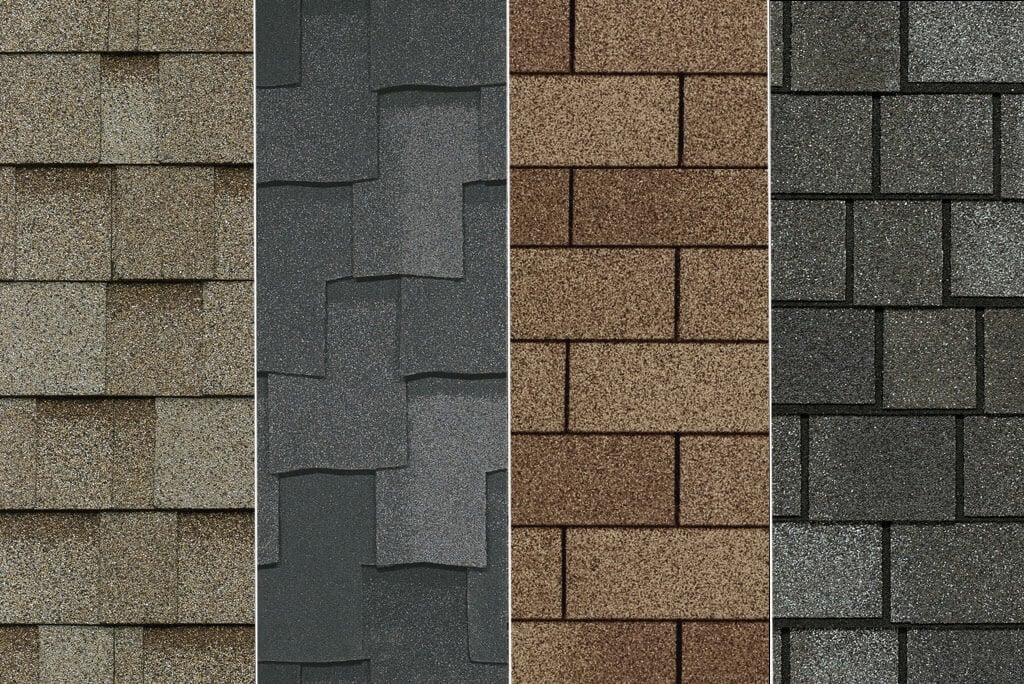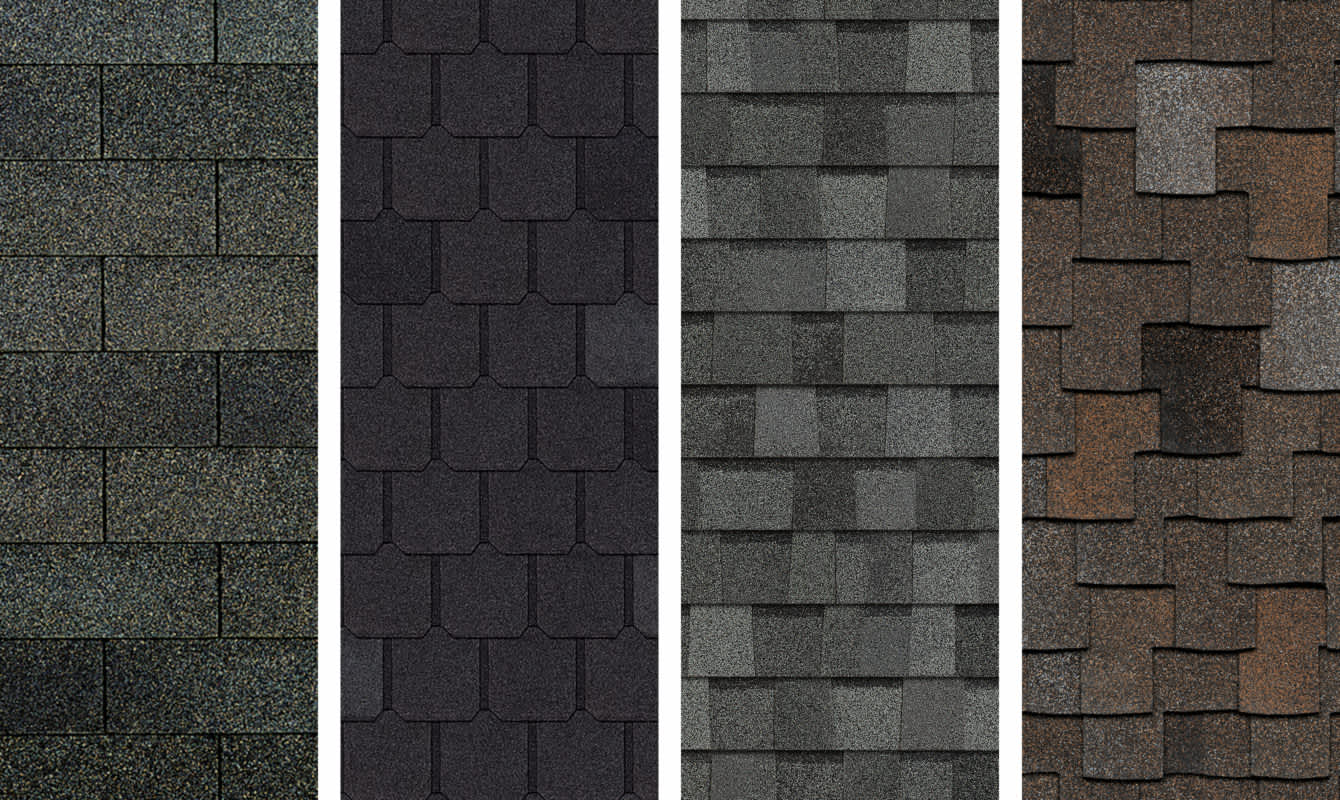Have you ever wondered what the best type of shingle roof is? When it comes to protecting your home and adding aesthetic appeal, choosing the right shingle roof is essential. With so many options available, it can be overwhelming to make a decision. But fret not! In this article, we will explore the different types of shingle roofs and help you determine which one is best suited for your needs. Whether you are looking for durability, affordability, or a specific style, by the end of this article, you will have the knowledge to make an informed choice for your home.
1. Asphalt Shingles
When it comes to choosing the best type of shingle roof, asphalt shingles are a popular and affordable option. They are widely used due to their durability, versatility, and cost-effectiveness. Asphalt shingles come in various styles and colors, making it easy to find the perfect match for your home’s aesthetic.
1.1 Traditional Three-Tab Shingles
Traditional three-tab asphalt shingles are the most common and cost-effective option for homeowners. These shingles have a flat appearance and are designed to give a clean and simple look to your roof. They are lightweight, easy to install, and provide good protection against the elements. However, they may not be as durable as other types of shingles.
1.2 Architectural Shingles
Architectural shingles, also known as dimensional or laminated shingles, are an upgraded version of traditional asphalt shingles. They have a more textured and layered appearance, which can add depth and visual interest to your roof. Architectural shingles are thicker and heavier than three-tab shingles, providing enhanced durability and weather resistance. They also tend to have longer warranties, making them a popular choice for homeowners looking for long-term protection.
2. Wood Shingles
Wood shingles offer a natural and rustic look to any home. They are often made from cedar or redwood, which are known for their durability and resistance to decay. Wood shingles can add warmth and character to your roof, creating a timeless and charming aesthetic.
2.1 Cedar Shingles
Cedar shingles are a popular choice for homeowners who value the natural beauty and sustainability of wood. They are lightweight, making them easy to install, and they provide good insulation properties. Cedar shingles are also naturally resistant to insects and rot, increasing their lifespan and reducing the need for frequent replacements. However, they do require regular maintenance, including staining or treating, to preserve their appearance and prevent rot.
2.2 Redwood Shingles
Redwood shingles are another excellent option for homeowners seeking a wood roof with superior durability. Redwood is known for its resistance to rot, decay, and insect damage, making it a long-lasting and low-maintenance choice. These shingles are generally more expensive than cedar shingles but offer excellent durability and a distinctive natural red color that can enhance the visual appeal of your home.

3. Metal Shingles
Metal shingles are gaining popularity for their sleek appearance, longevity, and energy efficiency. They are available in various materials, including aluminum and steel, and offer excellent resistance to fire, mildew, and insects.
3.1 Aluminum Shingles
Aluminum shingles are lightweight and corrosion-resistant, making them an ideal choice for coastal areas or regions with high humidity. They are also highly durable and can withstand harsh weather conditions, including strong winds and hail. Aluminum shingles are available in a range of styles, including standing seam and interlocking panels, giving homeowners the flexibility to choose the design that best suits their taste.
3.2 Steel Shingles
Steel shingles are known for their strength and longevity. They are typically made from galvanized or galvalume steel, which is coated with a protective layer to prevent rust and corrosion. Steel shingles come in a variety of styles and can mimic the appearance of traditional roofing materials, such as wood or slate. They offer excellent durability, energy efficiency, and resistance to extreme weather conditions, making them a long-term investment for homeowners.
4. Slate Shingles
Slate shingles are a premium roofing option that exudes elegance and sophistication. They are made from natural stone and are known for their exceptional durability and longevity. Slate shingles can enhance the architectural beauty of any home with their rich colors and unique textures.
4.1 Natural Slate Shingles
Natural slate shingles are harvested from quarries and cut into individual pieces for installation. They are renowned for their unmatched beauty and durability, often lasting over a century with proper maintenance. Natural slate shingles are fireproof and highly resistant to extreme weather conditions. However, they are also one of the most expensive roofing options due to the labor-intensive installation process and the limited availability of high-quality slate.
4.2 Synthetic Slate Shingles
For homeowners looking to achieve the look of natural slate shingles at a more affordable price, synthetic slate shingles are an excellent alternative. Made from a combination of recycled materials and polymers, synthetic slate shingles mimic the appearance of real slate while offering enhanced durability and lighter weight. They are easier to install and maintain than natural slate, making them a popular choice for homeowners who desire a high-end look without the associated costs and complexities.

5. Tile Shingles
Tile shingles provide a distinctive and stylish look to any home. They are available in clay or concrete materials, both of which offer durability and longevity.
5.1 Clay Tile Shingles
Clay tile shingles are prized for their timeless appeal and excellent durability. They are available in a wide range of colors, textures, and styles, allowing homeowners to achieve a customized look for their roofs. Clay tile shingles are renowned for their ability to withstand extreme weather conditions, including strong winds and heavy rain. They also have superior fire resistance, making them an ideal choice for areas prone to wildfires. However, clay tile shingles can be heavy, so it is essential to ensure that your roof structure can support their weight.
5.2 Concrete Tile Shingles
Concrete tile shingles are a durable and cost-effective alternative to clay tiles. They are available in various shapes and designs, including flat, low-profile, and simulated wood shakes. Concrete tile shingles offer excellent weather resistance, energy efficiency, and fire resistance. They are also lightweight compared to clay tiles, making them easier to install and potentially reducing the need for additional roof reinforcement.
6. Composite Shingles
Composite shingles combine synthetic materials and additives to create a durable and versatile roofing option. They are available in various styles, colors, and textures, allowing homeowners to achieve their desired aesthetic without compromising on performance.
6.1 Synthetic Shingles
Synthetic shingles, often made from a combination of plastic and rubber, are designed to mimic the appearance of traditional roofing materials like wood or slate. They offer excellent durability, lightweight properties, and resistance to extreme weather conditions. Synthetic shingles are easy to install and maintain, making them a popular choice for homeowners seeking a low-cost and long-lasting roofing solution.
6.2 Rubber Shingles
Rubber shingles, also known as rubberized asphalt shingles, are made from recycled materials such as plastic, rubber, or tires. They are lightweight, easy to install, and highly durable. Rubber shingles offer excellent resistance to extreme weather conditions, including hail and high winds. They also provide good insulation properties, helping to regulate the temperature inside your home and potentially reducing energy costs.

7. Green Roofs
Green roofs have gained popularity in recent years due to their environmental benefits and aesthetic appeal. They involve the installation of vegetation and plantings on the roof surface, creating a natural and eco-friendly space.
7.1 Living Roofs
Living roofs, also known as vegetative or eco-roofs, consist of a layer of vegetation planted on top of a waterproof membrane. They offer numerous advantages, including improved energy efficiency, reduced stormwater runoff, and enhanced biodiversity. Living roofs can also help to insulate your home, reducing heating and cooling costs. Additionally, they provide an aesthetically pleasing view from above and offer a habitat for birds, insects, and other wildlife.
7.2 Solar Reflective Roofs
Solar reflective roofs, also known as cool roofs, are designed to reflect sunlight and reduce heat absorption. They are typically made from materials that have a high solar reflectance index (SRI), such as specialized coatings or light-colored shingles. Solar reflective roofs can help to lower cooling costs by reducing the amount of heat transferred into your home. They are particularly beneficial in hot and sunny climates, where excessive heat gain can be a challenge.
8. Impact Resistance
If you live in an area prone to severe weather conditions, it is essential to consider the impact resistance of your shingles. Impact-resistant shingles are specifically designed to withstand hail, falling debris, and strong winds, reducing the risk of damage to your roof.
8.1 Class 1 Impact-Resistant Shingles
Class 1 impact-resistant shingles are tested to withstand the impact of a two-inch steel ball dropped from 12 feet without sustaining damage. These shingles offer basic protection against hail and are suitable for areas with moderate weather conditions.
8.2 Class 4 Impact-Resistant Shingles
Class 4 impact-resistant shingles are the highest-rated shingles for impact resistance. They are tested to withstand the impact of a two-inch steel ball dropped from 20 feet without sustaining damage. Class 4 shingles provide excellent protection against hail, falling debris, and extreme winds. While they are typically more expensive than standard shingles, their enhanced durability can save you money on potential repairs or replacements in the long run.
9. Cost and Budget
When choosing the best type of shingle roof, it is important to consider the cost of materials and installation. Your budget will play a crucial role in determining the most suitable option for your home.
9.1 Cost of Materials
The cost of shingle materials can vary significantly depending on the type of shingle and the desired aesthetic. Asphalt shingles are generally the most affordable option, while premium materials like slate or wood can be more expensive. Synthetic options, such as composite or rubber shingles, offer a cost-effective alternative that replicates the appearance of higher-priced materials.
9.2 Installation Costs
Installation costs can vary based on factors such as the size and complexity of your roof, as well as the availability of skilled contractors in your area. While some shingle types may be more labor-intensive to install, others, like asphalt or composite shingles, are relatively straightforward and can be installed quickly. It is recommended to obtain multiple quotes from reputable contractors to get an accurate estimate for your specific project.
10. Climate Considerations
The climate in your area should heavily influence your choice of shingle roof. Different shingle types offer varying levels of performance and durability in different climates.
10.1 Hot and Sunny Climates
In hot and sunny climates, it is important to choose shingles that can withstand high temperatures and intense UV exposure. Metal shingles, such as aluminum or steel, are excellent options as they have high heat resistance and reflect sunlight. Solar reflective roofs or green roofs can also help to reduce heat absorption and keep your home cooler.
10.2 Cold and Snowy Climates
In cold and snowy climates, shingles need to be able to withstand freezing temperatures, heavy snow loads, and ice dams. Asphalt shingles are a popular choice in these regions due to their durability and ability to shed snow easily. Metal shingles, such as steel, are also a good option as they can resist damage from ice and snow. Additionally, proper insulation and ventilation in the attic are crucial to prevent ice dams and maintain a stable indoor temperature.
In conclusion, there is no definitive answer to the question of the best type of shingle roof. The best choice for you will depend on factors such as your budget, aesthetics, climate, and specific needs. It is recommended to consult with a professional roofing contractor to assess your options and choose the shingles that will provide the best protection and value for your home. Whether you opt for asphalt, wood, metal, slate, tile, composite, or green roofs, each type has its advantages and can enhance the beauty and functionality of your home for years to come.

